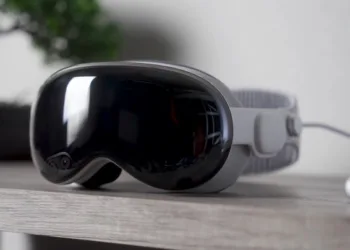In recent years, Apple has typically rolled out new chips exclusively for its iPhone Pro models, but that paradigm shifted recently. Now, the entire iPhone 16 family is equipped with the latest A18 chips. The standard iPhone 16 features an A18, while the iPhone 16 Pro showcases the A18 Pro. But what truly sets these two chips apart? Let’s take a closer look at the key differences.
A18 vs. A18 Pro: Understanding the Dual Chip Design
The A18 series from Apple utilizes an advanced second-generation 3-nanometer manufacturing process, similar to the one utilized in the recent M4 chip found in the iPad Pro.
It appears that the previous A17 Pro and M3 chips faced significant production challenges, which may explain why the M4 was released shortly after the M3. This may also clarify why Apple chose not to incorporate the older A17 Pro chip into the base model iPhone 16.
But what accounts for the two distinct chip configurations? What differentiates the A18 Pro from the A18? The differences are subtle yet essential.
Let’s breakdown the specifications of the two chips:
A18 Pro Chip Specifications
- New 6-core CPU featuring 2 performance cores and 4 efficiency cores
- New 6-core GPU
- New 16-core Neural Engine
A18 Chip Specifications
- New 6-core CPU with 2 performance cores and 4 efficiency cores
- New 5-core GPU
- New 16-core Neural Engine
Did you notice the key difference?
The A18 chip includes one less GPU core than its Pro counterpart. Capturing the essence of the core difference, the A18 features five GPU cores compared to the A18 Pro’s six.
If you’re considering the standard iPhone 16, it’s unlikely that you’ll feel the absence of that additional GPU core.
The Role of Chip Binning
It’s plausible that Apple didn’t initially plan for two separate chips for the iPhone 16 and 16 Pro models. Instead, it’s highly likely that the company is employing a practice known as chip binning.
As previously elucidated, no chip manufacturing process is flawless, especially as size scales down to the nanometer level. This process is fraught with challenges, and even the most pristine environments can contain minor contaminants. Consequently, manufacturers often target certain specifications and categorize chips that fall short into different quality bins.
In layman’s terms, while Apple doesn’t explicitly confirm this, it’s conceivable that the same chip is used across all iPhone 16 models. However, those deemed to meet the highest quality standards are allocated for the Pro models, while the others may be reserved for the standard iPhone 16.
There are certainly compelling reasons to choose the iPhone 16 Pro over its standard counterpart.
However, for the vast majority of users, the distinction between the A18 and A18 Pro chips is unlikely to be a significant factor in their decision-making.
Are you concerned about the disparity between the A18 and A18 Pro? We’d love to hear your thoughts in the comments below.










